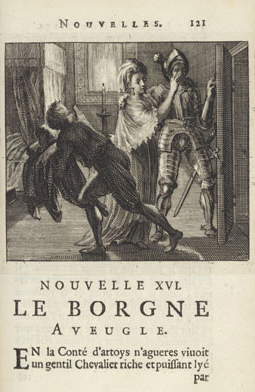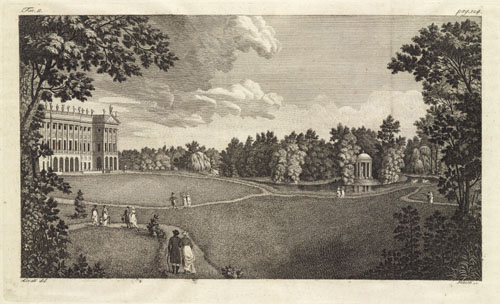|
| Each tale in Les cent nouvelles nouvelles
(Amsterdam, 1701) carries a fine half-page engraving after designs
by Romeyne de Hooghe |
The Art of the Printed Book
A great library must provide its users not only with texts and
information, but with a reflection of the aspirations of craftsmen
who present knowledge to us in visually pleasing forms. Many of
our past benefactors have ensured that the work of the best printers,
illustrators and binders is represented in the University Library’s
collections; Samuel Sandars, with his love of books printed on vellum,
is a pre-eminent example. The Friends have also presented to the
Library specimens of fine book production, ranging from the incunables
of the fifteenth century to the output of private presses of the
twentieth. The recent bequest made through the Friends by John Dreyfus
greatly enriches our holdings from modern American and continental
presses.
Items on display
Quintus Horatius Flaccus (65 B.C.-8 B.C.), Opera, Venice,
18 September 1479 (Inc.3.B.3.16); Hymni per totum annum: item
orationes dominicales, feriales, ac de sanctis, cum suis antiphonis
& versiculis, Antwerp, 1601 (F160.c.6.3); Les cent
nouvelles nouvelles, Cologne [Amsterdam], 1701 (7735.e.231-2);
Henry Morris (b. 1925), Omnibus. Instructions for amateur papermakers,
Newtown, Pa., 1967 (CCC.52.439); Poetry through typography,
New York, 1993 (CCC.52.470); Diana Bloomfield, woodcut blocks for
Evelyn Ansell, Twenty-five poems, c. 1963; Edward Topsell
(bap. 1572, d. 1625), The historie of foure-footed beastes,
London, 1607 (Syn.4.60.41). View
exhibit captions.
|

